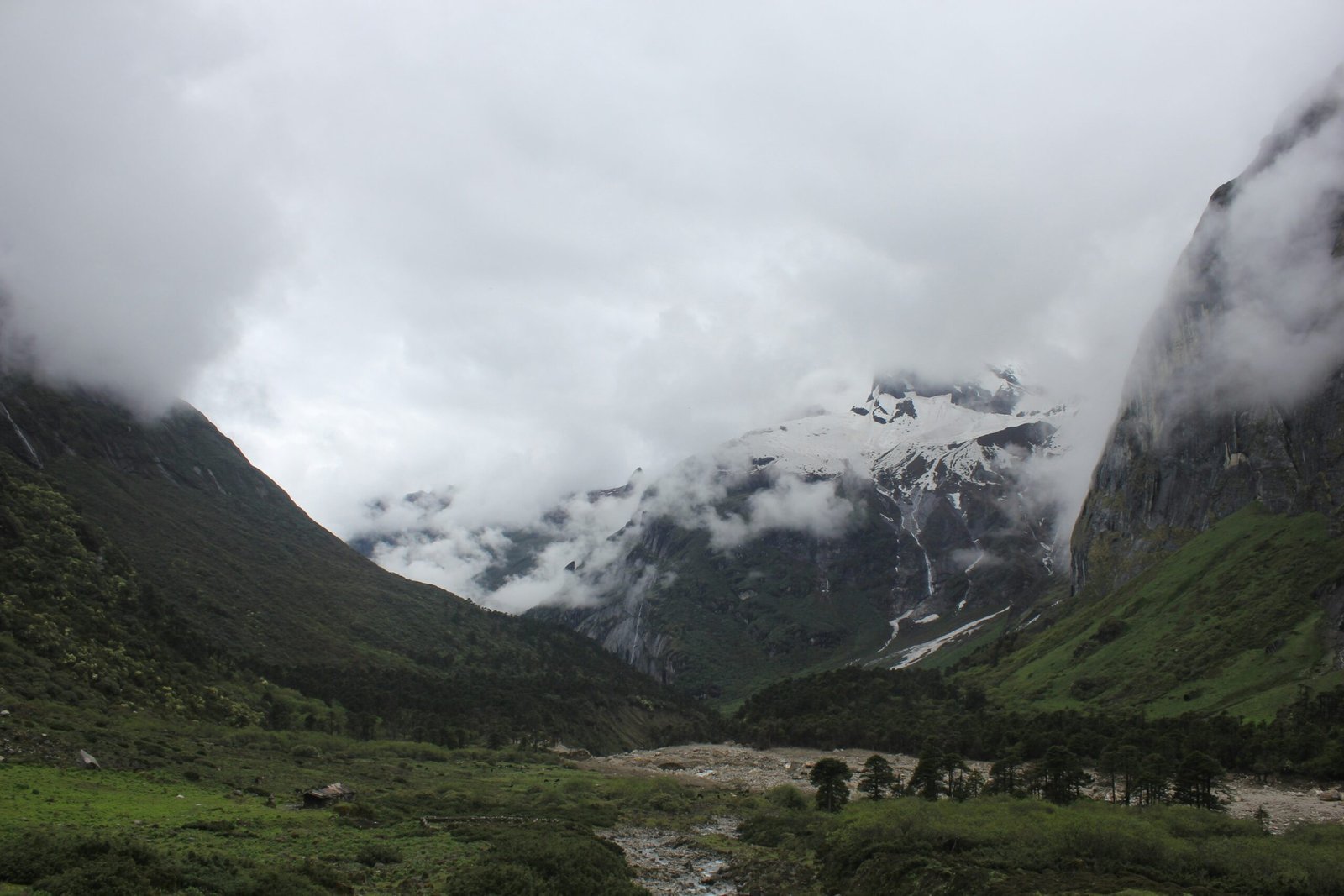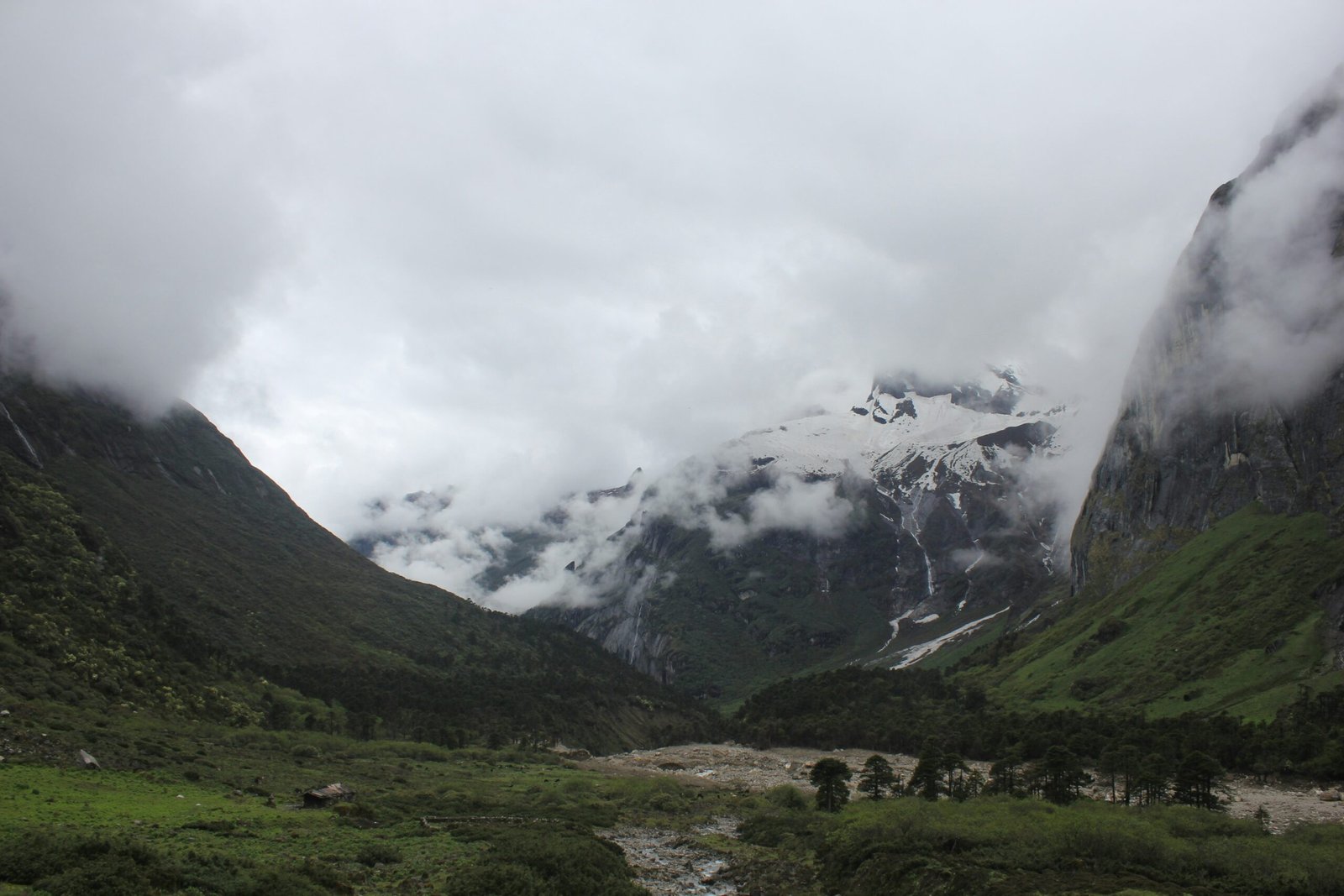
Introduction to Makalu
Makalu, standing at 8,485 meters, is one of the world’s highest mountains and a prominent fixture in the Himalayan range. It is the fifth highest peak globally, a testament to its towering dominance and awe-inspiring presence. Geographically, Makalu straddles the border between Nepal and the Tibet Autonomous Region of China, establishing it as a key landmark in both regions. This peak is not just a geographical marvel but a symbol of nature’s grandeur and ferocity.
The Himalayan range, renowned for its formidable peaks and rugged terrain, finds one of its most majestic embodiments in Makalu. The mountain’s distinctive pyramid shape, with sharp, well-defined ridges, makes it easily recognizable and visually striking. Its imposing stature and remote location contribute to its reputation as both majestic and menacing, drawing climbers and adventurers from around the world to test their skills and endurance against its challenging slopes.
Makalu’s geographical significance is further underscored by its position within the protected Makalu-Barun National Park in Nepal. This area is a sanctuary for a diverse range of flora and fauna, including several rare and endangered species. The park’s lush valleys and pristine ecosystems contrast sharply with the stark, icy heights of Makalu, highlighting the mountain’s role in a broader ecological context.
For those who dare to approach its heights, Makalu offers not just a physical challenge but a profound encounter with the raw power of nature. Its remote and rugged terrain demands respect and careful preparation, making it a definitive objective for seasoned climbers. As we delve deeper into Makalu’s various aspects, from its climbing history to its environmental significance, the complexity and allure of this majestic peak will become increasingly apparent.
Geographical Features
Makalu, the fifth highest mountain in the world, stands out prominently due to its unique pyramid-like shape, characterized by sharp ridges and steep slopes. This majestic peak, rising to an elevation of 8,485 meters (27,838 feet), presents a formidable challenge to climbers. Its four-sided pyramid structure is both awe-inspiring and intimidating, contributing to its reputation as one of the most distinctive mountains in the Himalayas. The south-east and north-west ridges are particularly sharp, making the ascent even more treacherous.
The surrounding landscape of Makalu enhances its allure. Nestled within the Makalu-Barun National Park, the region is a sanctuary of natural beauty and rich biodiversity. The Makalu-Barun Valley, in particular, is a haven for flora and fauna, offering a stark contrast to the harsh conditions of the mountain itself. This valley is part of the larger Eastern Himalayas and is renowned for its lush greenery, cascading waterfalls, and pristine rivers. It provides a striking juxtaposition to the rugged and icy slopes of Makalu, creating a unique and varied ecosystem.
The lower elevations of the Makalu-Barun Valley are home to dense forests of rhododendrons, firs, and birches, which gradually give way to alpine meadows and, eventually, the barren, rocky terrain closer to the peak. This gradient of vegetation supports a diverse array of wildlife, including the elusive snow leopard, red panda, and Himalayan black bear. Birdwatchers can also find a wealth of avian species, from the colorful Himalayan monal to various birds of prey.
Makalu’s geographical features make it not just a mountain, but a symbol of the Earth’s diverse and dramatic landscapes. The combination of its formidable physical characteristics and the rich natural environment of the Makalu-Barun Valley underscores why this peak remains both a majestic sight and a menacing challenge for adventurers and nature enthusiasts alike.
Historical Ascents
Makalu, the world’s fifth-highest mountain standing at 8,485 meters, has witnessed both triumphant ascents and tragic losses. The first successful ascent of this majestic peak was achieved by a French expedition in 1955. Led by Jean Franco, the team consisted of climbers Lionel Terray and Jean Couzy, who were the first to reach the summit on May 15th. This historic climb set the stage for future ascents, establishing Makalu as a formidable yet alluring challenge for mountaineers worldwide.
Following the initial French expedition, Makalu saw a series of significant climbs. In 1970, an American team led by Robert Bates made a notable attempt but was ultimately thwarted by severe weather conditions. It wasn’t until 1971 that a remarkable ascent was completed by a Japanese team from the Tokyo University Alpine Club, who successfully reached the summit via the Southeast Ridge, a route that would become a standard path for future climbers.
In 1980, renowned Italian climber Reinhold Messner made history once again by conquering Makalu without supplemental oxygen, a feat that underscored his incredible endurance and skill. Messner’s ascent was a pivotal moment in high-altitude climbing, demonstrating the potential of human capability in extreme conditions. Similarly, in 1997, an expedition led by the Kukuczka family marked the first Polish ascent of Makalu, further diversifying the mountain’s climbing heritage.
The mountain has also been the site of numerous tragedies. In 2006, a significant loss occurred when several climbers, including the highly experienced French alpinist Jean-Christophe Lafaille, went missing during their summit attempts. These events serve as a somber reminder of the inherent dangers associated with high-altitude mountaineering.
Today, the most commonly used routes on Makalu include the Southeast Ridge and the West Pillar. These routes demand advanced technical skills and physical stamina, attracting seasoned climbers from around the globe. Despite the risks, the allure of Makalu’s majestic yet menacing presence continues to captivate the climbing community, solidifying its place in the annals of mountaineering history.
The Challenges of Climbing Makalu
Makalu, standing as the fifth highest mountain in the world at 8,485 meters, presents formidable challenges that make it one of the most difficult peaks to ascend. Its steep slopes and sharp ridges require climbers to possess advanced technical skills and experience. The intricate route demands proficiency in ice and rock climbing, with sections that necessitate precise maneuvering across knife-edge ridges and treacherous ice walls.
One of the primary challenges is the extreme weather conditions that prevail throughout the year. Climbers face unpredictable weather patterns, including severe snowstorms, high winds, and temperatures that can plummet to dangerous lows. These harsh conditions not only amplify the physical strain but also increase the risk of frostbite and hypothermia, making it crucial for climbers to be well-prepared and equipped to handle such adversities.
Additionally, the high altitude of Makalu poses significant physiological challenges. At such elevations, the thin air reduces oxygen availability, leading to altitude sickness, which can affect even the most seasoned mountaineers. Symptoms such as headaches, nausea, dizziness, and fatigue can severely impair a climber’s performance and decision-making abilities. Acclimatization is essential, yet it adds to the duration and complexity of the expedition.
Climbing Makalu also demands immense physical and mental stamina. The expedition typically spans several weeks, requiring climbers to endure prolonged physical exertion while carrying heavy loads and navigating through hazardous terrain. The psychological strain of isolation and the constant threat of avalanches or crevasses test one’s mental resilience. Team coordination and support play a crucial role, as mutual trust and communication are vital for a successful ascent.
In essence, Makalu is a peak that not only challenges a climber’s technical expertise but also demands exceptional physical endurance and mental fortitude. The mountain’s majestic yet menacing nature continues to attract and test mountaineers from around the globe, making it a coveted objective for those seeking to push the boundaries of human potential.
Flora and Fauna
The region surrounding Makalu, particularly within the Makalu-Barun National Park, boasts a remarkably diverse ecosystem. This national park, situated in the Eastern Himalayas of Nepal, is a sanctuary for a plethora of flora and fauna, making it a crucial area for biodiversity conservation.
The floral diversity in the Makalu-Barun National Park is astounding, with over 3,000 species of flowering plants. Among these, the rhododendron forests are particularly noteworthy, displaying an array of colors during the blooming season. The park is also home to several rare and medicinal plants, including the endangered Himalayan blue poppy and the elusive Saussurea. These plants not only add to the park’s beauty but also hold significant ecological and cultural value.
In terms of fauna, the Makalu region is equally impressive. The park provides habitat to a variety of wildlife, including some rare and endangered species. The snow leopard, red panda, and the Himalayan black bear are among the most notable inhabitants. Bird enthusiasts can also find solace here, as the park hosts over 440 species of birds. The Impeyan pheasant, also known as the Danphe, is the national bird of Nepal and a common sight in the area. Additionally, the park shelters an array of amphibians, reptiles, and butterflies, further enriching its biodiversity.
The importance of preserving this unique ecosystem cannot be overstated. The diverse flora and fauna contribute to the ecological balance, supporting not just the local environment but also the global biodiversity. Conservation efforts are in place to protect this natural heritage, with the involvement of local communities, government agencies, and international organizations. Initiatives such as anti-poaching patrols, habitat restoration projects, and community education programs are crucial in safeguarding the Makalu-Barun National Park for future generations.
Cultural Significance
Makalu, the fifth highest mountain in the world, holds profound cultural and spiritual importance for the local communities residing in its shadow. Among the various ethnic groups inhabiting the region, the Sherpa people stand out for their deep-rooted connection to this majestic peak. Revered as a sacred entity, Makalu is often regarded as the abode of divine beings. Legends and myths surrounding the mountain are passed down through generations, enriching the cultural tapestry of the local populace.
One prevalent legend speaks of the mountain as the home of a goddess who is believed to protect the surrounding lands and its inhabitants. This spiritual significance imbues the mountain with an aura of reverence, influencing the daily lives and practices of the Sherpa community. Rituals and offerings are a common sight, performed to appease the spirits and seek blessings for prosperity and safety. These age-old traditions underscore the symbiotic relationship between the people and the mountain, a bond that is both spiritual and existential.
Apart from the Sherpas, other ethnic groups such as the Rai and Limbu also share a cultural affinity with Makalu. Their folklore and religious beliefs often intertwine with the natural splendor of the peak, further enriching the cultural landscape of the region. The mountain serves as a constant reminder of nature’s grandeur and the mystical forces that are believed to govern it.
In their interactions with Makalu, the local communities demonstrate a profound respect for the environment. This is evident in their sustainable practices and conservation efforts, aimed at preserving the pristine beauty of the region. The cultural and spiritual significance of Makalu thus extends beyond its physical presence, influencing the ethos and way of life of the people who call this majestic peak their home.
Modern Expeditions and Tourism
Makalu, standing as the fifth highest peak in the world, continues to be a formidable challenge for modern mountaineers. Organizing an expedition to Makalu involves meticulous planning and coordination. Climbers must obtain several permits from both Nepal and China, as the mountain straddles their border. These permits are crucial for ensuring regulated and safe climbing experiences. Additionally, hiring experienced guides and porters, often from local Sherpa communities, is essential for navigating the treacherous terrains of Makalu.
The role of modern technology in climbing Makalu cannot be understated. Advanced climbing equipment, including high-quality ropes, crampons, and oxygen systems, have significantly enhanced safety and efficiency. Satellite phones and GPS devices ensure constant communication and accurate navigation, while weather forecasting technology helps climbers make informed decisions about timings and routes. Despite these advancements, the mountain’s unpredictable weather and challenging topography still demand immense physical and mental resilience.
Adventure tourism has seen a notable rise in the Makalu region, attracting climbers from around the globe. This surge in tourism has contributed positively to the local economy. Increased demand for guides, porters, accommodation, and other services provides a vital source of income for the local communities. However, this influx of tourists also poses significant challenges. The environmental impact of increased human activity, including waste management and ecosystem disruption, necessitates strict regulation and sustainable practices.
Efforts are being made to balance the economic benefits of tourism with the need to preserve Makalu’s pristine environment. Conservation initiatives and awareness campaigns aim to educate climbers and tourists about minimizing their ecological footprint. By fostering responsible tourism practices, there is hope that the majestic beauty of Makalu will be preserved for generations to come, while continuing to support the livelihoods of those who call this region home.
Conservation and Future Challenges
Makalu, standing as both a majestic and menacing peak, is not immune to the environmental challenges plaguing our planet. One of the primary issues facing Makalu and its surrounding areas is the impact of climate change. Glacial melting, accelerated by rising global temperatures, poses a significant threat to the delicate ecosystems that thrive in these high-altitude regions. As the glaciers recede, they disrupt the natural water cycles, affecting not only local flora and fauna but also the communities that depend on these water sources downstream.
Another pressing concern is the increasing human activity in and around Makalu. The allure of conquering this formidable peak has led to a rise in mountaineering expeditions, which, despite their adventurous spirit, leave behind a trail of ecological footprints. The accumulation of waste, including non-biodegradable materials, not only tarnishes the pristine environment but also poses a threat to wildlife. Moreover, the construction of trails, base camps, and other infrastructure to support these expeditions further exacerbates the environmental strain.
In response to these challenges, several conservation efforts are being implemented to safeguard Makalu’s natural beauty. Initiatives such as waste management programs, stricter regulations on climbing permits, and awareness campaigns are crucial in mitigating the adverse effects of human activity. Furthermore, scientific research and environmental monitoring play a vital role in understanding the long-term impacts of climate change on this region and devising strategies to combat them.
Embracing sustainable practices is paramount to preserving Makalu for future generations. This includes promoting eco-friendly tourism, encouraging climbers to adhere to the principles of “Leave No Trace,” and supporting local communities in their efforts to protect their natural heritage. By fostering a collective sense of responsibility and stewardship, we can ensure that Makalu remains a symbol of natural wonder and resilience amidst the challenges it faces.



